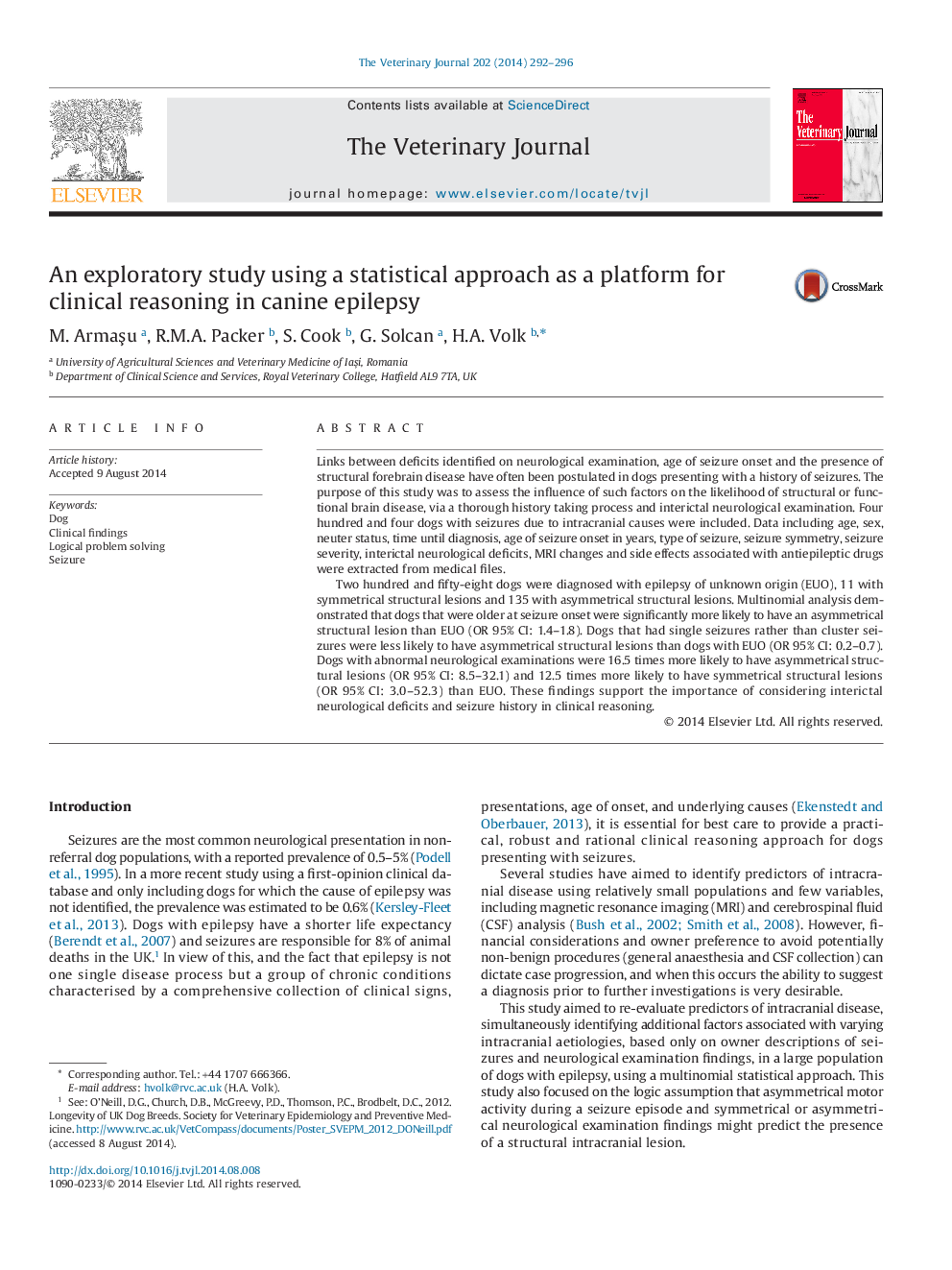| کد مقاله | کد نشریه | سال انتشار | مقاله انگلیسی | نسخه تمام متن |
|---|---|---|---|---|
| 2463911 | 1111764 | 2014 | 5 صفحه PDF | دانلود رایگان |
• Dogs that were older at seizure onset were significantly more likely to have an asymmetrical structural brain lesion than epilepsy of unknown origin (EUO).
• Dogs that had single seizures rather than cluster seizures were less likely to have an asymmetrical structural lesion than dogs with EUO.
• Dogs that had an abnormal neurological examination were 16.5 times more likely to have an asymmetrical structural brain lesion, and 12.5 times more likely to have a symmetrical structural brain lesion than EUO.
Links between deficits identified on neurological examination, age of seizure onset and the presence of structural forebrain disease have often been postulated in dogs presenting with a history of seizures. The purpose of this study was to assess the influence of such factors on the likelihood of structural or functional brain disease, via a thorough history taking process and interictal neurological examination. Four hundred and four dogs with seizures due to intracranial causes were included. Data including age, sex, neuter status, time until diagnosis, age of seizure onset in years, type of seizure, seizure symmetry, seizure severity, interictal neurological deficits, MRI changes and side effects associated with antiepileptic drugs were extracted from medical files.Two hundred and fifty-eight dogs were diagnosed with epilepsy of unknown origin (EUO), 11 with symmetrical structural lesions and 135 with asymmetrical structural lesions. Multinomial analysis demonstrated that dogs that were older at seizure onset were significantly more likely to have an asymmetrical structural lesion than EUO (OR 95% CI: 1.4–1.8). Dogs that had single seizures rather than cluster seizures were less likely to have asymmetrical structural lesions than dogs with EUO (OR 95% CI: 0.2–0.7). Dogs with abnormal neurological examinations were 16.5 times more likely to have asymmetrical structural lesions (OR 95% CI: 8.5–32.1) and 12.5 times more likely to have symmetrical structural lesions (OR 95% CI: 3.0–52.3) than EUO. These findings support the importance of considering interictal neurological deficits and seizure history in clinical reasoning.
Journal: The Veterinary Journal - Volume 202, Issue 2, November 2014, Pages 292–296
